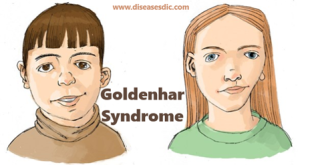Gricelli Syndrome – Overview
Gricelli syndrome is an inherited condition characterized by unusually light (hypopigmented) skin and light silvery-gray hair starting in infancy. Researchers have identified three types of this disorder, which are distinguished by their genetic cause and pattern of signs and symptoms.
Griscelli syndrome type 1 involves severe problems with brain function in addition to the distinctive skin and hair coloring. Affected individuals typically have delayed development, intellectual disability, seizures, weak muscle tone (hypotonia), and eye and vision abnormalities. Another condition called Elejalde disease has many of the same signs and symptoms, and some researchers have proposed that Griscelli syndrome type 1 and Elejalde disease are actually the same disorder.
Gricelli Syndrome – Types
Griscelli syndrome is a disorder of melanosome transport, and divided into several types:
- Griscelli syndrome type 1 (Elejalde syndrome)
- Griscelli syndrome type 2 (Partial albinism with immunodeficiency)
- Griscelli syndrome type 3
Pathophysiology of Gricelli Syndrome
In melanocytes, melanosomes (vesicles containing the pigment melanin) are transported on microtubules. They are then bound by Rab27A which recruits Slac2-a and myosin Va. This complex then transfers the melanosomes from the microtubules to actin filaments. This transfer is necessary for the transport of melanosomes from the perinuclear area to the cell periphery. The loss of any one of these proteins interrupts melanosome transport and results in the hypopigmentation.
However, these three proteins do not work together in other cells and Rab27A effectors may be ‘mix and match.’ For example, the knockout of Rab27 causes the hypopigmentation but also immunodeficiency due to deficiencies in cytotoxic killing activity in cytotoxic T cells (something that also depends on vesicle transport). While, the knockout of myosin Va does not cause immunodeficiency, but it does cause neural defects. Though some neural problems (i.e. brain damage) can be seen in Rab27A deficient children, this is thought to be a secondary effect of the immune problems, and not directly due to the lack of Rab27A.
Gricelli Syndrome – Causes and Risk factors
The three types of Griscelli syndrome are caused by mutations in different genes: Type 1 results from mutations in the MYO5A gene, type 2 is caused by mutations in the RAB27A gene, and type 3 results from mutations in the MLPH gene.
The proteins produced from these genes are found in pigment-producing cells called melanocytes. Within these cells, the proteins work together to transport structures called melanosomes. These structures produce a pigment called melanin, which is the substance that gives skin, hair, and eyes their color (pigmentation). Melanosomes are formed near the center of melanocytes, but they must be transported to the outer edge of these cells and then transferred into other types of cells to provide normal pigmentation.
Mutations in any of the three genes, MYO5A, RAB27A, or MLPH, impair the normal transport of melanosomes within melanocytes. As a result, these structures clump near the center of melanocytes, trapping melanin within these cells and preventing normal pigmentation of skin and hair. The clumps of pigment, which can be seen in hair shafts when viewed under a microscope, are a hallmark feature of the condition.
In addition to their roles in melanosome transport, the MYO5A and RAB27A genes have functions elsewhere in the body. Specifically, the protein produced from the MYO5A gene transports materials within nerve cells (neurons) that appear to be critical for cell function. The protein produced from the RAB27A gene is found in immune system cells, where it is involved in the release of certain compounds that kill foreign invaders (such as viruses and bacteria). Mutations in these genes impair these critical cell activities, leading to the neurological problems and immune system abnormalities found in Griscelli syndrome types 1 and 2, respectively.
Signs and Symptoms
- Pigment clumps in hair shafts
- Melanosome accumulation in melanocytes
- Recurrent neutropenia
- Low blood platelet level
- Decreased gamma globulin levels in the blood
- The recurring decrease in blood fibrinogen level
- Silvery hair
- Frequent infections
- Premature death
- Neurological symptoms
- Anemia
- Enlarged liver and Spleen
- Lymphadenopathy
- Pancytopenia
- Fever
- Jaundice
- Neurological regression
- Reduced reflexes
- Seizures
- Loss of previously attained skills
- Nystagmus
- Ataxia
Complications due to Gricelli Syndrome
- Patients with Griscelli syndrome can have HS; infections; and neurologic, immunologic, and bleeding problems.
- There is a development of in situ melanoma after allogeneic bone marrow transplantation in a person with Griscelli syndrome type 2
Diagnosis of Gricelli Syndrome
Commonage of diagnosis is between 4 months to 7 years of age. Microscopic examination of the hair shaft provides strong support for the diagnosis of these syndromes and allows one to distinguish between them.
In all the three types the hair shaft contains a typical pattern of uneven accumulation of large pigment granules, instead of the homogeneous distribution of small pigment granules seen in normal hair.
In Gricelli Syndrome the clusters of melanin pigment on the hair shaft are six times larger than in Chediak-Higashi Syndrome (CHS).
Treatment of Gricelli Syndrome
Treatment is aimed at the cause, if one can be found.
- Supportive therapy includes an anti-inflammatory, an antihistamine, and rest.
- Treatment of symptoms may include a tricyclic antidepressant (doxepin), a histamine2-blocker (cimetidine), and an anxiolytic (alprazolam). In some patients, avoidance of environmental irritants and certain foods may help to relieve symptoms.
- Experimental treatments include the antiviral acyclovir and selected immunomodulators, such as I.V. gamma globulin, ampligen, and transfer factor.
Surgical Care
Bone marrow transplantation is the most effective treatment of this condition. Bone marrow transplantation is the only possible cure for Griscelli syndrome. [52] Even a low number of donor cells in the patient’s bone marrow can be sufficient to control symptoms of Griscelli syndrome in cases caused by mutations in RAB27A.
Medication Summary
To suppress the accelerated phase (lymphohistiocytic infiltration of multiple organs, in particular, the brain and the meninges) of disease, immunosuppressive therapy is used.
Chemotherapy (VP16) or, more recently, antithymocyte globulins (ATG) (10 mg/kg for 5 d) and cyclosporin A have achieved remissions, and the use of intrathecal methotrexate injections transiently help treat the neurocerebral involvement. However, chemotherapy is sometimes ineffective for the treatment of the primary disease and frequently fails to control relapses. Recurrent infections have been minimized with antibacterial and antiviral agents.
Other regimens that have resulted in the induction of remission have been obtained with the combination of high-dose systemic methylprednisolone and etoposide and intrathecal methotrexate, cytosine arabinoside, and prednisone, and with a regimen of ATGs, steroids, and cyclosporine, but these therapies are palliative rather than curative.
Patients with Griscelli syndrome can be given antibiotics if they have HS.
Prevention of Gricelli Syndrome
Morphologic examination of peripheral blood or cultured amniotic and chorionic villi cells can help in prenatal diagnosis of Griscelli syndrome.
Prenatal diagnosis of Griscelli syndrome has been accomplished by examination of hair from a biopsy sample of fetal scalp obtained at 21 weeks of gestation. A fetus that had such a biopsy was aborted. These results were confirmed by a post-abortion examination of the fetus revealing silvery hair and characteristic microscopic findings.
With the cloning of the Griscelli syndrome genes, direct mutation-based carrier detection and prenatal diagnosis currently appear possible in families with defined MYO5A or RAB27A gene mutations. In addition, given the proximity of the 2 genes responsible for Griscelli syndrome, polymorphic markers linked to the Griscelli syndrome locus in the band 15q21 region can be used for identifying the presence of the gene even if the precise mutation has not yet been identified in a family.
 Diseases Treatments Dictionary This is complete solution to read all diseases treatments Which covers Prevention, Causes, Symptoms, Medical Terms, Drugs, Prescription, Natural Remedies with cures and Treatments. Most of the common diseases were listed in names, split with categories.
Diseases Treatments Dictionary This is complete solution to read all diseases treatments Which covers Prevention, Causes, Symptoms, Medical Terms, Drugs, Prescription, Natural Remedies with cures and Treatments. Most of the common diseases were listed in names, split with categories.







